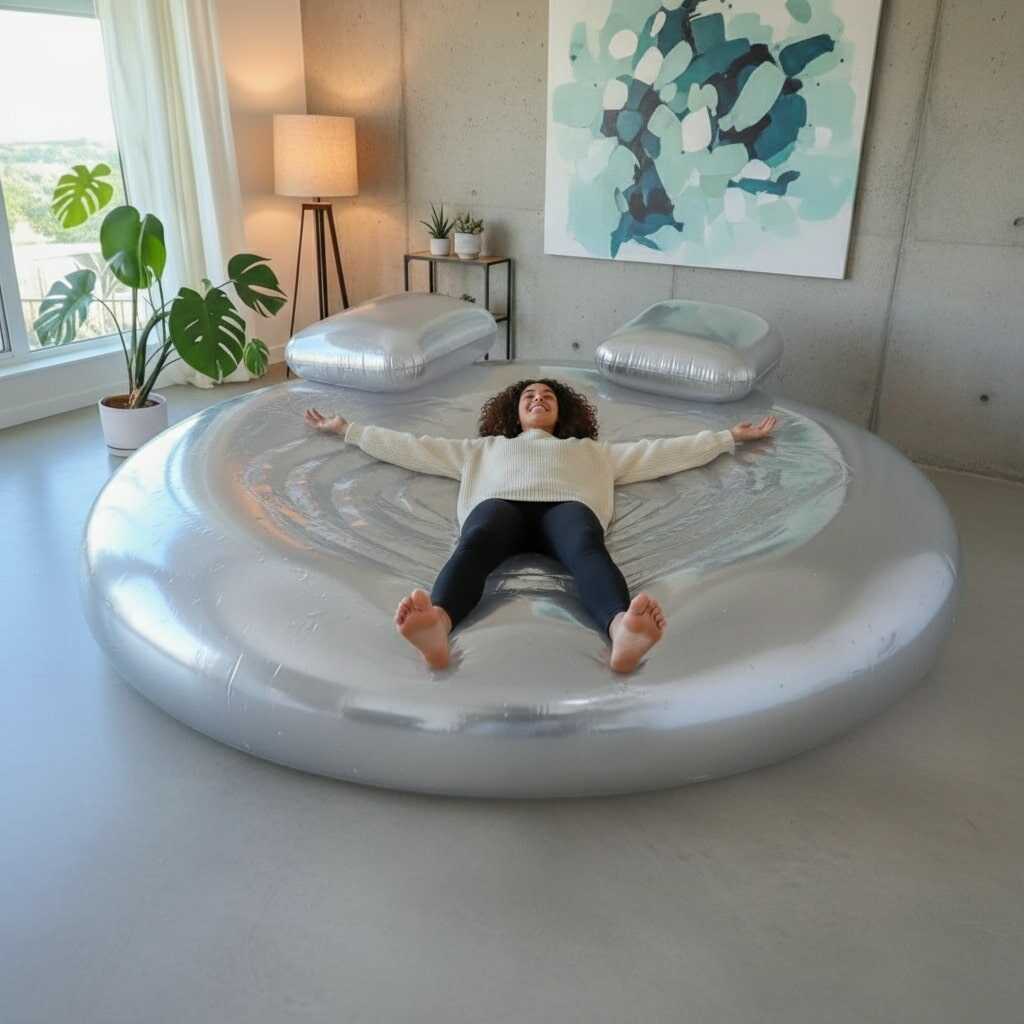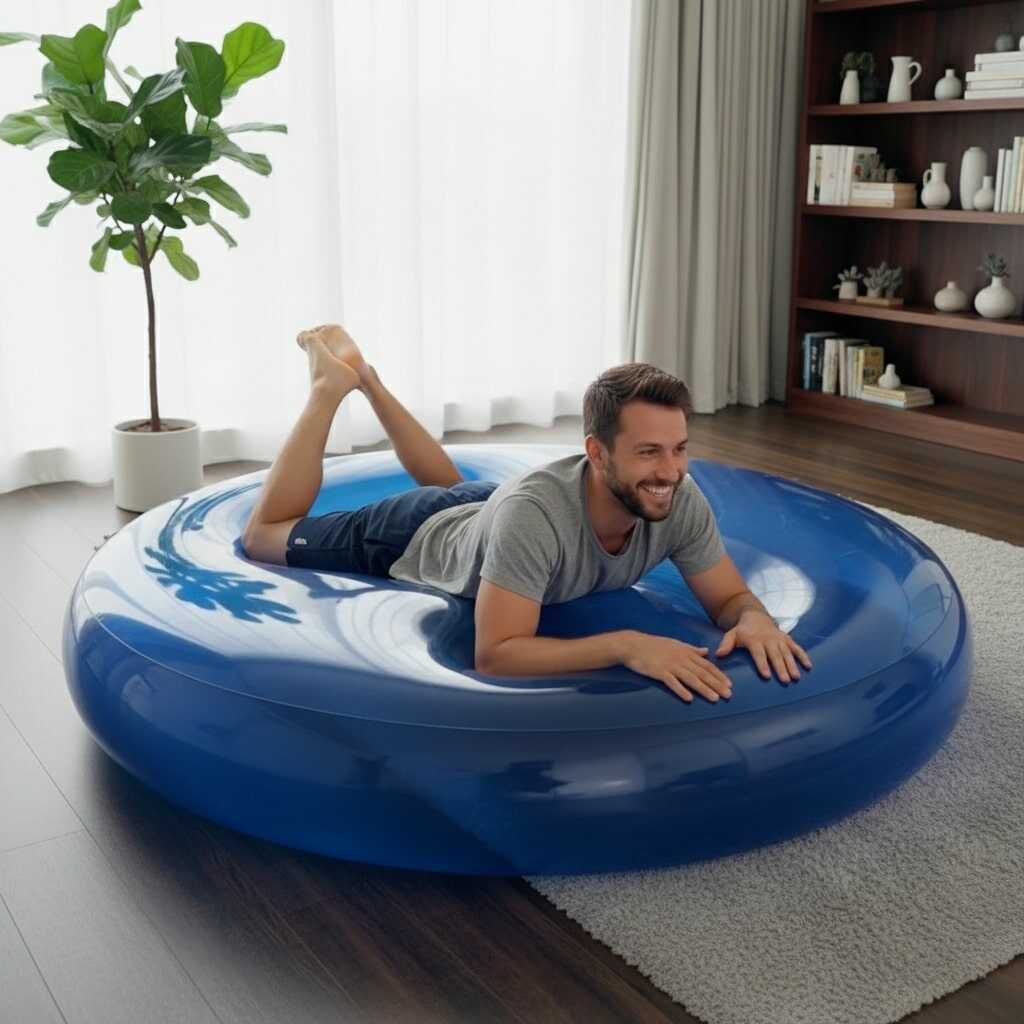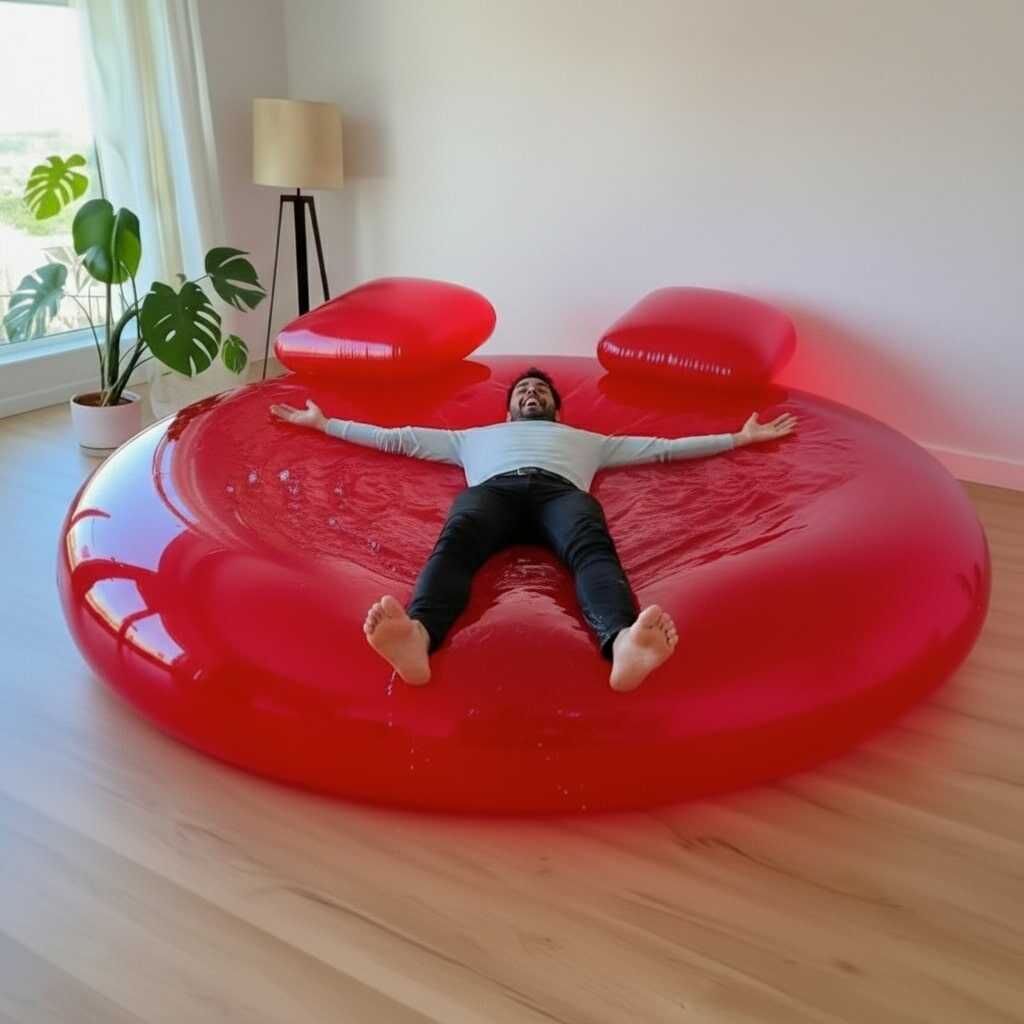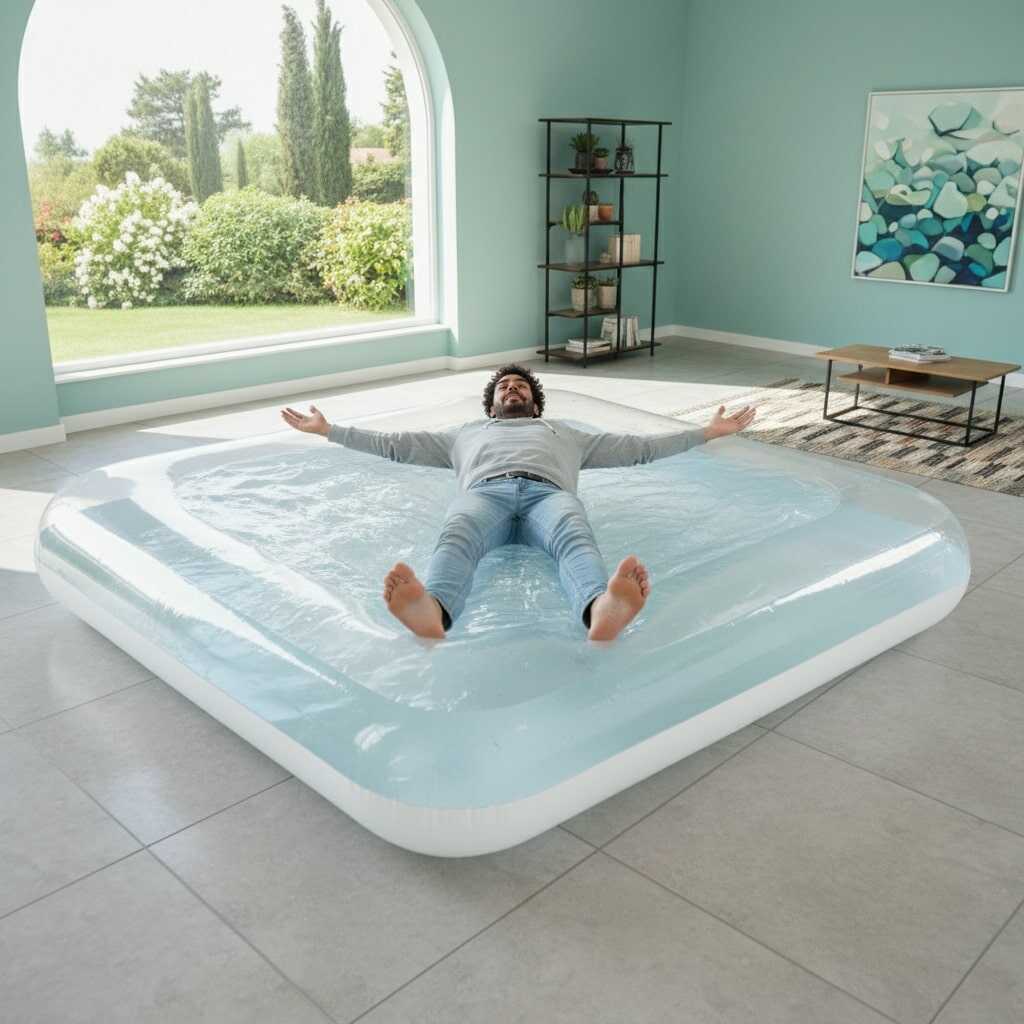The jelly bed is transforming sleep experiences around the world with its innovative design and unparalleled comfort. As a revolutionary sleep surface, it combines cutting-edge materials and ergonomic engineering to support our bodies like never before. Whether you’re seeking restful sleep, relief from back pain, or a unique sleep environment, understanding what makes a jelly bed special will help you make an informed choice for your health and comfort.
Understanding the Marvel of Jelly Beds – The Fusion of Science and Comfort
Imagine a sleep surface that molds perfectly to your body, adapts in real-time, and offers a soothing sensation that relaxes every muscle. That’s precisely what a jelly bed aims to deliver—merging scientific innovation with luxurious comfort. As a product that’s gained significant popularity over recent years, jelly beds have become highly regarded for their ability to provide supportive sleep while reducing pressure points and enhancing overall relaxation.

The core of the jelly bed’s appeal lies in its unique material composition—often made from a viscous, gel-like substance that can react dynamically to your movements and body heat. This interactive property offers a distinct experience compared to traditional mattresses. The material almost acts like a second skin, providing personalized support with a gentle, comforting touch. Experts hail it as a breakthrough in sleep technology, especially for individuals with chronic pain, arthritis, or those who simply desire a premium sleep environment.
A comprehensive understanding of the jelly bed involves exploring its construction, the science behind its materials, and how it compares to other high-end sleep surfaces. Much attention has been paid to developing jelly beds that enhance spinal alignment, improve circulation, and deliver an unrivaled feeling of weightlessness. Because sleep quality is deeply connected to physical and mental health, innovative solutions like the jelly bed are becoming essential in the realm of personal wellness.
The Ingredients that Make a Jelly Bed – Materials, Design, and Features
To truly appreciate the benefits of a jelly bed, it’s vital to delve into the building blocks that make this innovative sleep solution so effective. Understanding the materials, design principles, and technological features will shed light on why jelly beds are rapidly becoming a preferred choice among sleep enthusiasts and medical professionals alike.

Jelly beds typically feature a layered construction that combines ergonomic support with viscoelastic gel properties. The top layer often consists of a soft, breathable fabric that enhances comfort and maintains temperature regulation. Beneath this lies the pivotal component—the gel-based material—that gives the mattress its distinctive characteristics. This material is engineered to distribute body pressure uniformly, reducing hot spots and preventing painful pressure points that can lead to restless nights.
Another significant feature is the integration of adaptive technology within some jelly beds. Certain models incorporate memory foam cores or hybrid systems that complement the gel’s contouring ability. These mattresses often include cooling fibers or moisture-wicking fabrics to enhance temperature regulation, which is critical in avoiding overheating during sleep. Advanced jelly beds may also include smart sensors that track sleep patterns and provide feedback, further optimizing nightly rest.
Design-wise, jelly beds prioritize health benefits like spinal support and alignment. Many are designed with ergonomic curves that cradle the body’s natural shape, promoting healthy posture. The support system in a jelly bed minimizes tossing and turning by maintaining consistent pressure distribution regardless of sleep position. For users with joint or muscular issues, these features can mean significant improvements in sleep quality and day-time energy levels.
The innovation extends to durability and ease of maintenance as well. High-quality jelly beds resist sagging over time, thanks to the resilient gel layer that retains shape and support. With removable, washable covers, care becomes convenient, encouraging consistent hygiene. Overall, the intricate blend of science and craftsmanship makes the jelly bed a premium product in the landscape of sleep technology.

How to Use a Jelly Bed – Practical Tips, Maintenance, and Optimal Sleep Strategies
Using a jelly bed correctly maximizes its benefits, ensuring you enjoy restful and restorative sleep night after night. From initial setup to everyday use, understanding best practices helps prolong the life of your mattress and enhances your sleep quality.
Start by placing your jelly bed on a sturdy, flat surface to maintain optimal support. Many models come with specific assembly instructions, especially if they include adjustable features or modular layers. Ensure the bed is positioned away from direct sunlight and extreme temperatures, as high heat can alter the gel’s consistency and reduce its performance.
When preparing to sleep, a lightweight, breathable bedding setup complements the properties of the jelly bed. Opt for natural fibers like cotton or bamboo that promote airflow and absorb excess moisture. For those who prefer additional comfort, layered bedding such as memory foam pillows or supportive cushions can enhance alignment and pressure relief. Keep in mind that the right pillows are crucial in aligning your neck and spine, further amplifying the benefits of the jelly support surface.
Routine maintenance is essential for prolonging your jelly bed’s lifespan. Regularly vacuum the surface to remove dust and allergens, and wash the removable cover as instructed by the manufacturer. Rotating or flipping the mattress periodically prevents uneven wear, allowing the gel layers to maintain their integrity and support features. If your jelly bed includes smart technology or sensors, ensure that connections and batteries are checked and replaced as needed, optimizing performance.

To fully leverage your jelly bed’s capabilities, adopt sleep strategies that promote relaxation and consistency. Establish a relaxing pre-sleep routine—dim the lights, avoid screens, and engage in calming activities like reading or meditation. Maintain a consistent sleep schedule to allow the gel material and support system to adapt and provide the best possible environment for restful hours. Incorporating gentle stretching or mindfulness exercises before bed can prevent muscle tension, making the plush support of your jelly bed even more effective in promoting deep sleep.
Comparing Jelly Bed to Other Sleep Surfaces – Pros, Cons, and Unique Advantages
For those exploring options for an upgraded sleep experience, comparing the jelly bed to traditional mattresses sheds light on its distinctive advantages and some limitations. Each sleep surface offers a different experience, and understanding these differences helps consumers align their choice with their specific needs.
Traditional spring mattresses have dominated the market for decades, providing durability and firm support but often at the expense of pressure point relief. Memory foam mattresses, meanwhile, contour to the body, alleviating pressure but sometimes trapping heat, which can disturb sleep. The jelly bed’s innovation lies in its ability to combine the contouring benefits of memory foam with enhanced cooling properties through gel technology, offering a balanced support system.
One notable benefit of the jelly bed over conventional options is its dynamic response to movement. The gel material reacts to body heat and pressure, providing support that adapts in real-time—unlike traditional foam that may develop permanent impressions over time. This responsive activeness results in less disturbance for partners sharing a bed, reducing the “roll-over” effect and ensuring undisturbed sleep.

However, despite its many advantages, jelly beds may have drawbacks. The initial cost tends to be higher than standard mattresses due to the sophisticated materials and technology involved. Additionally, some users may find the gel’s texture unfamiliar or slightly less firm than what they’re used to, particularly if they prefer very firm support. Nonetheless, the benefits often outweigh these negatives, especially for those requiring customized support or suffering from joint issues.
The cleaning and maintenance process can also differ; jelly beds usually demand a specific approach due to their gel layers, and improper handling might reduce lifespan. On the plus side, jelly beds deliver excellent longevity if properly cared for, and their resilience makes them a practical investment for many sleep enthusiasts focusing on health and well-being. Ultimately, choosing a jelly bed positions you at the intersection of comfort, innovation, and health-conscious sleep—making it a compelling alternative to traditional or even high-end memory foam mattresses.
FAQs About Jelly Beds – Clarifying Common Questions for Better Decision-making
What makes a jelly bed different from a traditional mattress?
A jelly bed incorporates viscoelastic gel layers that adapt dynamically to body contours, providing personalized support and pressure relief. Unlike traditional spring or foam mattresses, jelly beds promote better circulation, reduce hot spots, and can adapt in real-time to your movements, creating a unique sleeping experience.
Are jelly beds suitable for people with back pain?
Yes, jelly beds are highly recommended for individuals with back pain because they provide superior spinal alignment and pressure distribution. The gel technology reduces strain on pressure points, helping to alleviate discomfort and promote healthier sleep posture over time.
How durable is a jelly bed compared to other mattresses?
Jelly beds are engineered for durability, with resilient gel layers that resist sagging and maintain support over years of use. Proper maintenance, such as regular cleaning and rotation, extends their lifespan even further. Users often report a longer-lasting performance compared to standard foam or spring mattresses.
Can a jelly bed help with overheating during sleep?
Absolutely. Many jelly beds include cooling gel components and breathable fabrics designed to regulate temperature, making them ideal for hot sleepers. The gel dissipates heat away from the body, promoting a cooler and more comfortable night’s sleep.
How do I care for and maintain my jelly bed?
Maintenance involves gentle vacuuming the surface periodically and washing/removing covers as per manufacturer instructions. It’s beneficial to rotate or flip the mattress regularly to ensure even wear and preserve its supportive properties. Always follow specific guidelines related to your model to ensure long-lasting performance.
Conclusion
The jelly bed represents a remarkable leap forward in sleep technology, blending innovative materials with ergonomic design to offer exceptional support and comfort. Its unique gel-based construction adapts instantly to your body, reducing pressure points, supporting spinal alignment, and regulating temperature for a restful night. Compared to traditional mattresses, jelly beds bring a new level of responsiveness and personalized support that benefits people with joint issues, back pain, or those simply seeking superior sleep quality. Proper use and maintenance extend its benefits, making it a wise investment for health-conscious consumers. As an expert in sleep innovations, I strongly recommend exploring a jelly bed for a transformative sleep experience that aligns with modern wellness goals, promising longer, deeper, and more rejuvenating nights.
